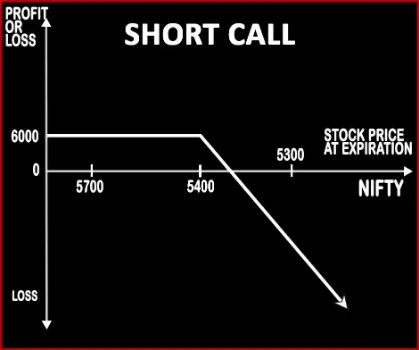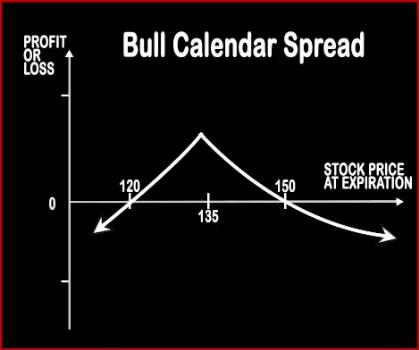Compare Strategies
| SHORT CALL | BULL CALENDER SPREAD | |
|---|---|---|

|

|
|
| About Strategy |
Short Call Option StrategyA trader shorts or writes a Call Option when he feels that underlying stock price is likely to go down. Selling Call Option is a strategy preferred for experienced traders. However this strategy is very risky in nature. If the stock rallies on the upside, your risk becomes potentially unquantifiable and unlimited. If the strategy |
Bull Calendar Spread Option StrategyThis strategy is implemented when a trader is bullish on the underlying stock/index in the short term say 2 months or so. A trader will write one Near Month OTM Call Option and buy one next Month OTM Call Option, thereby reducing the cost of purchase, with the same strike price of the same underlying asset. This strategy is used when a trader wants to make prof .. |
SHORT CALL Vs BULL CALENDER SPREAD - Details
| SHORT CALL | BULL CALENDER SPREAD | |
|---|---|---|
| Market View | Bearish | Bullish |
| Type (CE/PE) | CE (Call Option) | CE (Call Option) + PE (Put Option) |
| Number Of Positions | 1 | 2 |
| Strategy Level | Advance | Beginners |
| Reward Profile | Limited | Unlimited |
| Risk Profile | Unlimited | Limited |
| Breakeven Point | Strike Price of Short Call + Premium Received | Stock Price when long call value is equal to net debit. |
SHORT CALL Vs BULL CALENDER SPREAD - When & How to use ?
| SHORT CALL | BULL CALENDER SPREAD | |
|---|---|---|
| Market View | Bearish | Bullish |
| When to use? | It is an aggressive strategy and involves huge risks. It should be used only in case where trader is certain about the bearish market view on the underlying. | This strategy is used when a trader wants to make profit from a steady increase in the stock price over a short period of time. |
| Action | Sell or Write Call Option | Sell 1 Near-Term OTM Call, Buy 1 Long-Term OTM Call |
| Breakeven Point | Strike Price of Short Call + Premium Received | Stock Price when long call value is equal to net debit. |
SHORT CALL Vs BULL CALENDER SPREAD - Risk & Reward
| SHORT CALL | BULL CALENDER SPREAD | |
|---|---|---|
| Maximum Profit Scenario | Max Profit = Premium Received | You have unlimited profit potential to the upside. |
| Maximum Loss Scenario | Loss Occurs When Price of Underlying > Strike Price of Short Call + Premium Received | Max Loss = Premium Paid + Commissions Paid |
| Risk | Unlimited | Limited |
| Reward | Limited | Unlimited |
SHORT CALL Vs BULL CALENDER SPREAD - Strategy Pros & Cons
| SHORT CALL | BULL CALENDER SPREAD | |
|---|---|---|
| Similar Strategies | Covered Put, Covered Calls | The Collar, Bull Put Spread |
| Disadvantage | • Unlimited risk to the upside underlying stocks. • Potential loss more than the premium collected. | • Limited profit even if underlying asset rallies. • If the short call options are assigned when the underlying asset rallies then losses can be sustained. |
| Advantages | • With the help of this strategy, traders can book profit from falling prices in the underlying asset. • Less investment, more profit. • Traders can book profit when underlying stock price fall, move sideways or rise by a small amount. | • Limited losses to the net debit. • Enable trader to book profit even if underlying asset stays stagnant. • If the market trends reverse, cashing in from stock price movement at limited risk. |